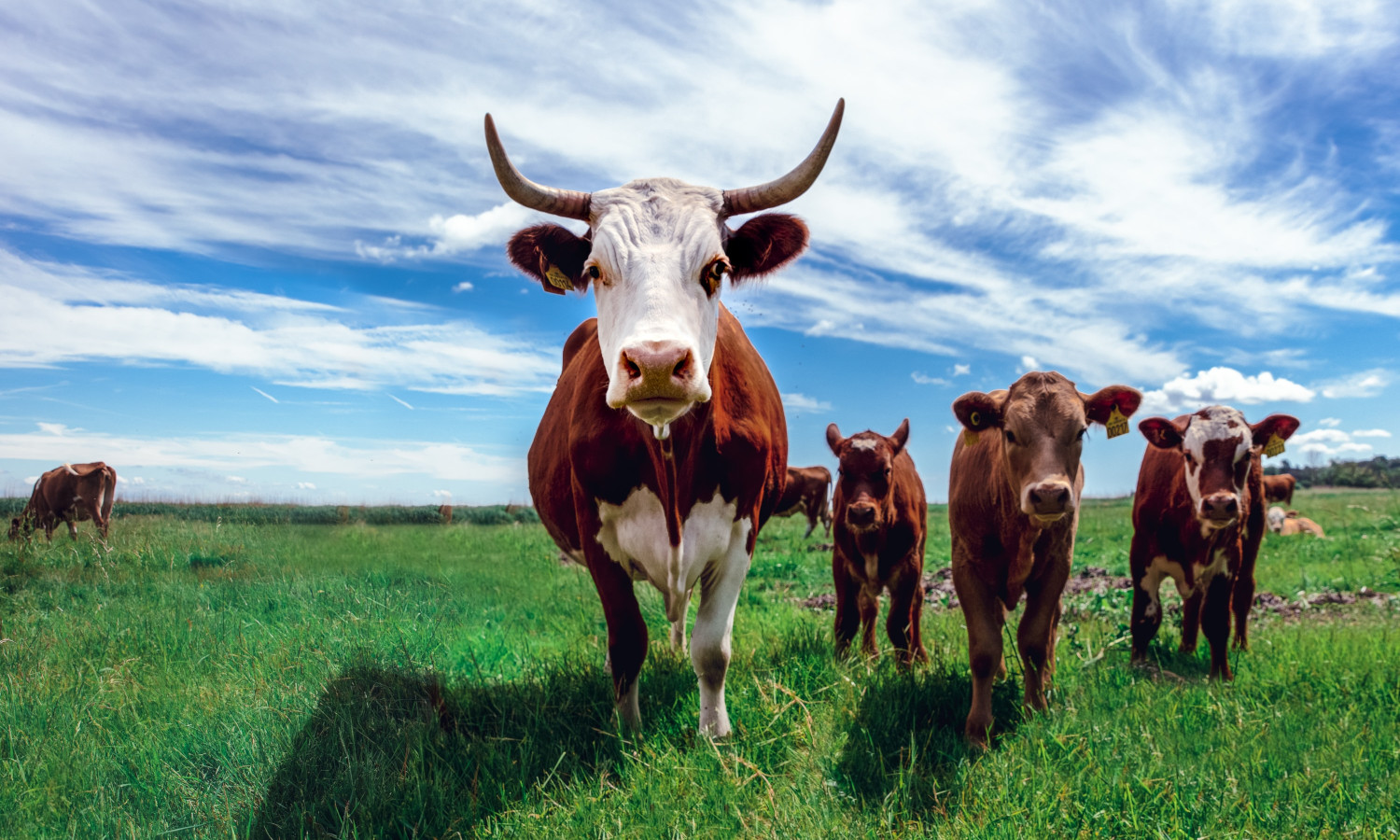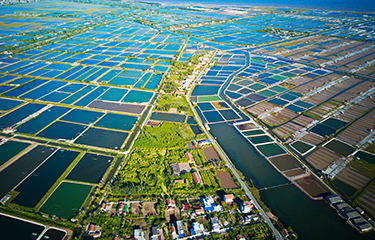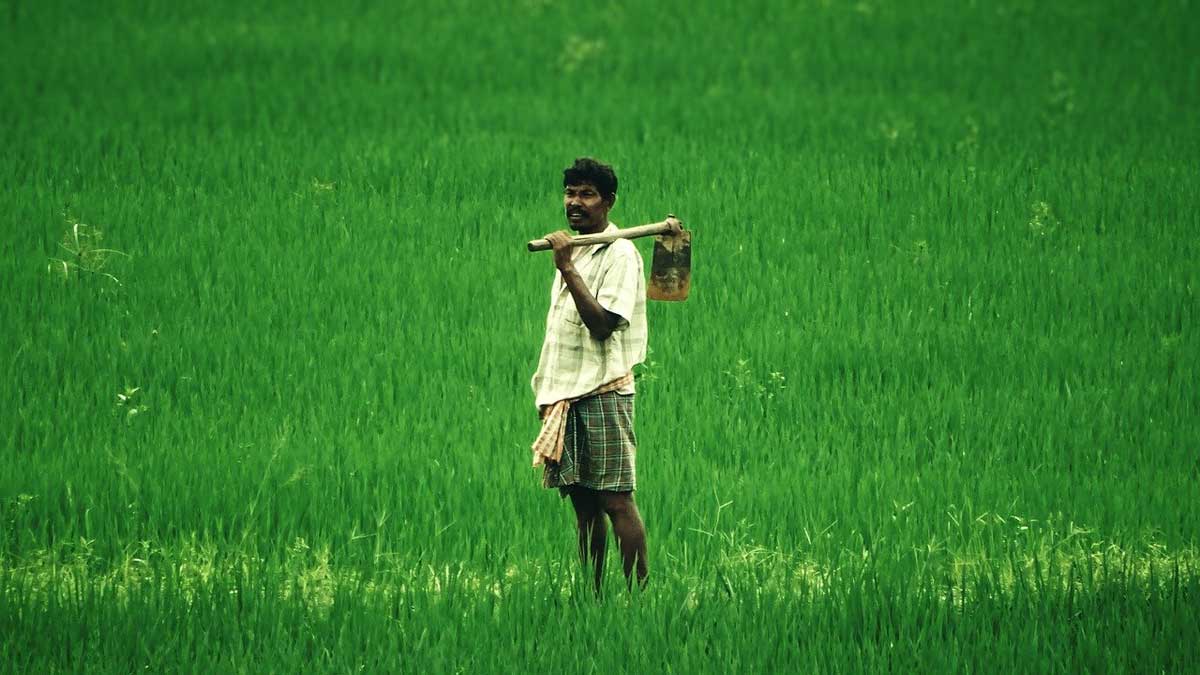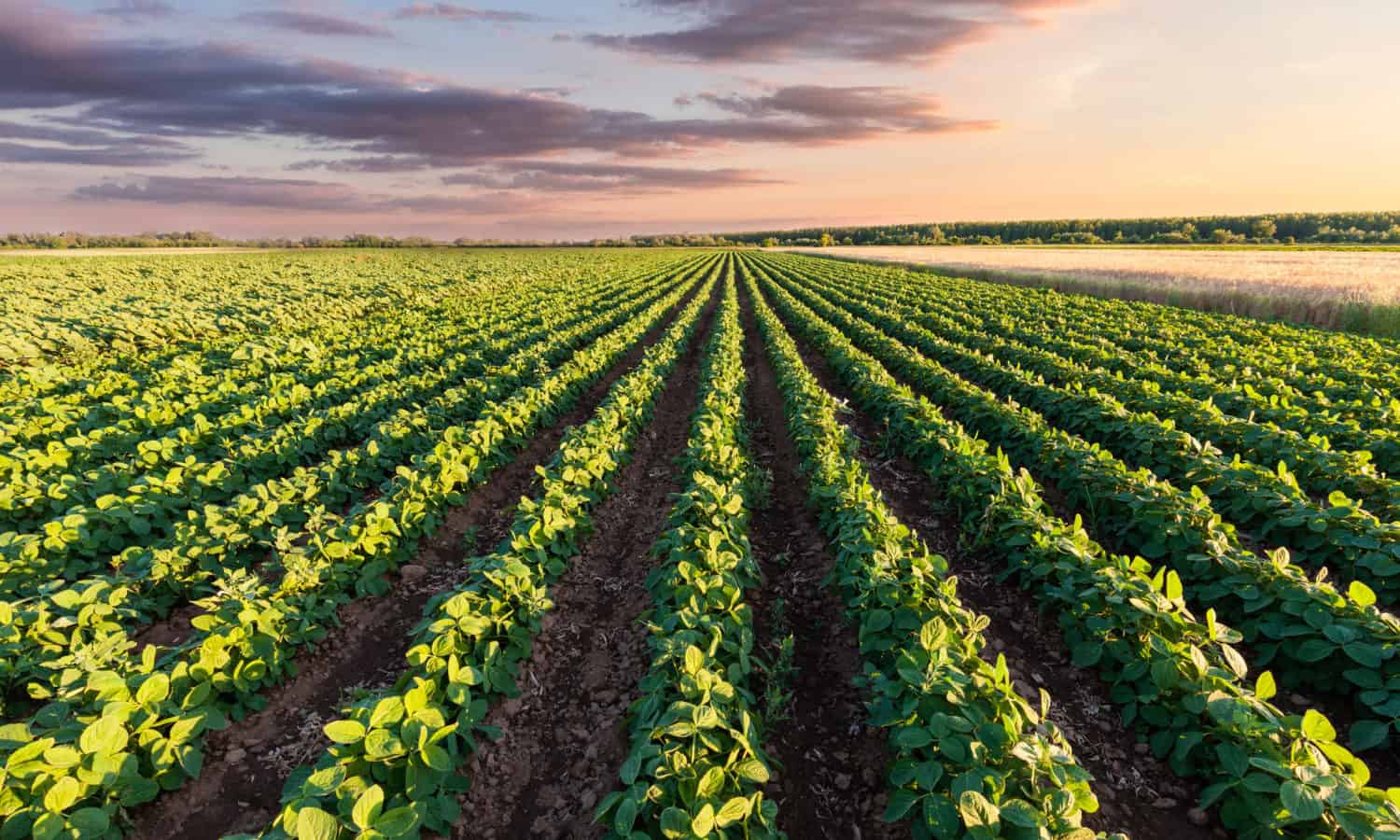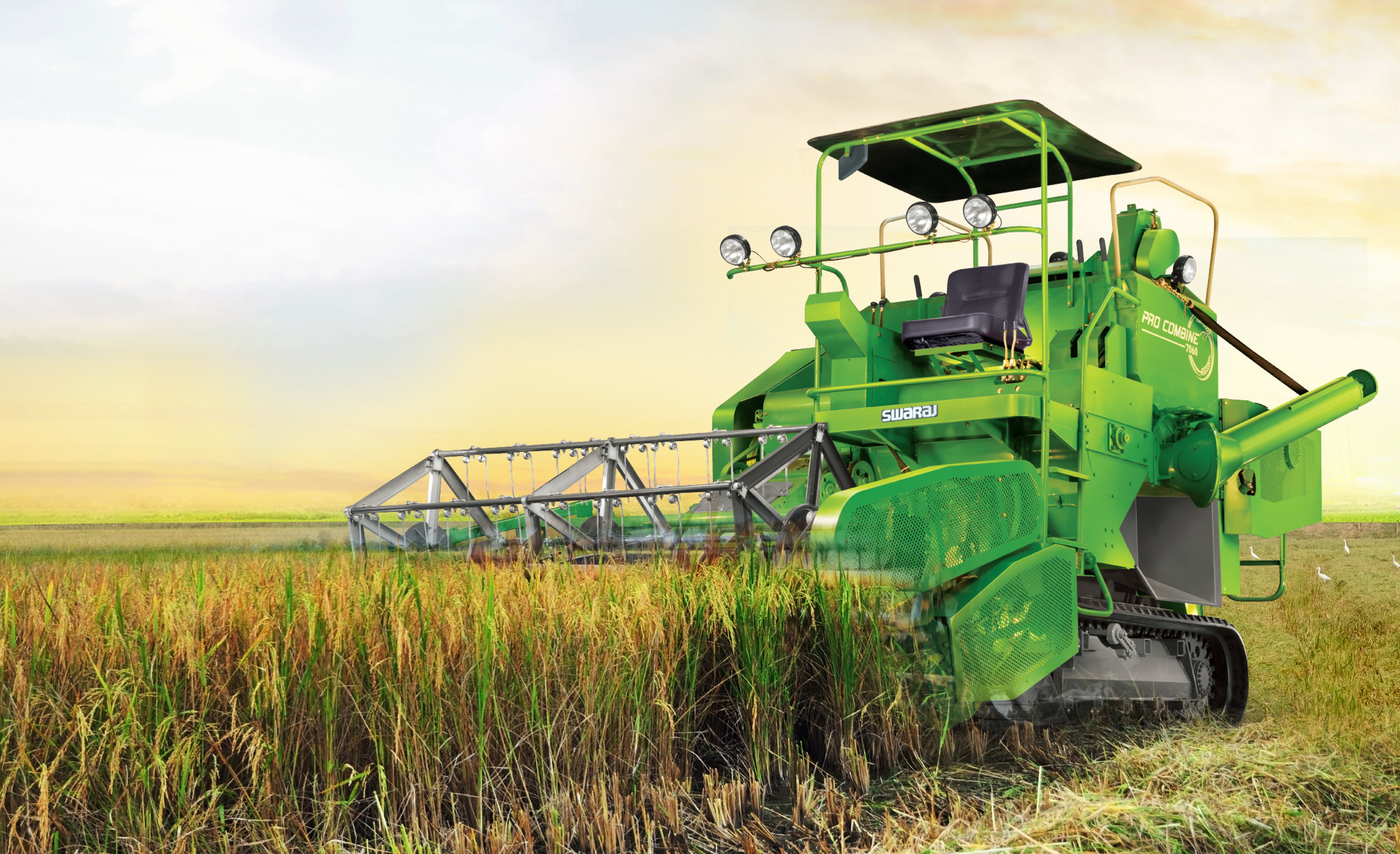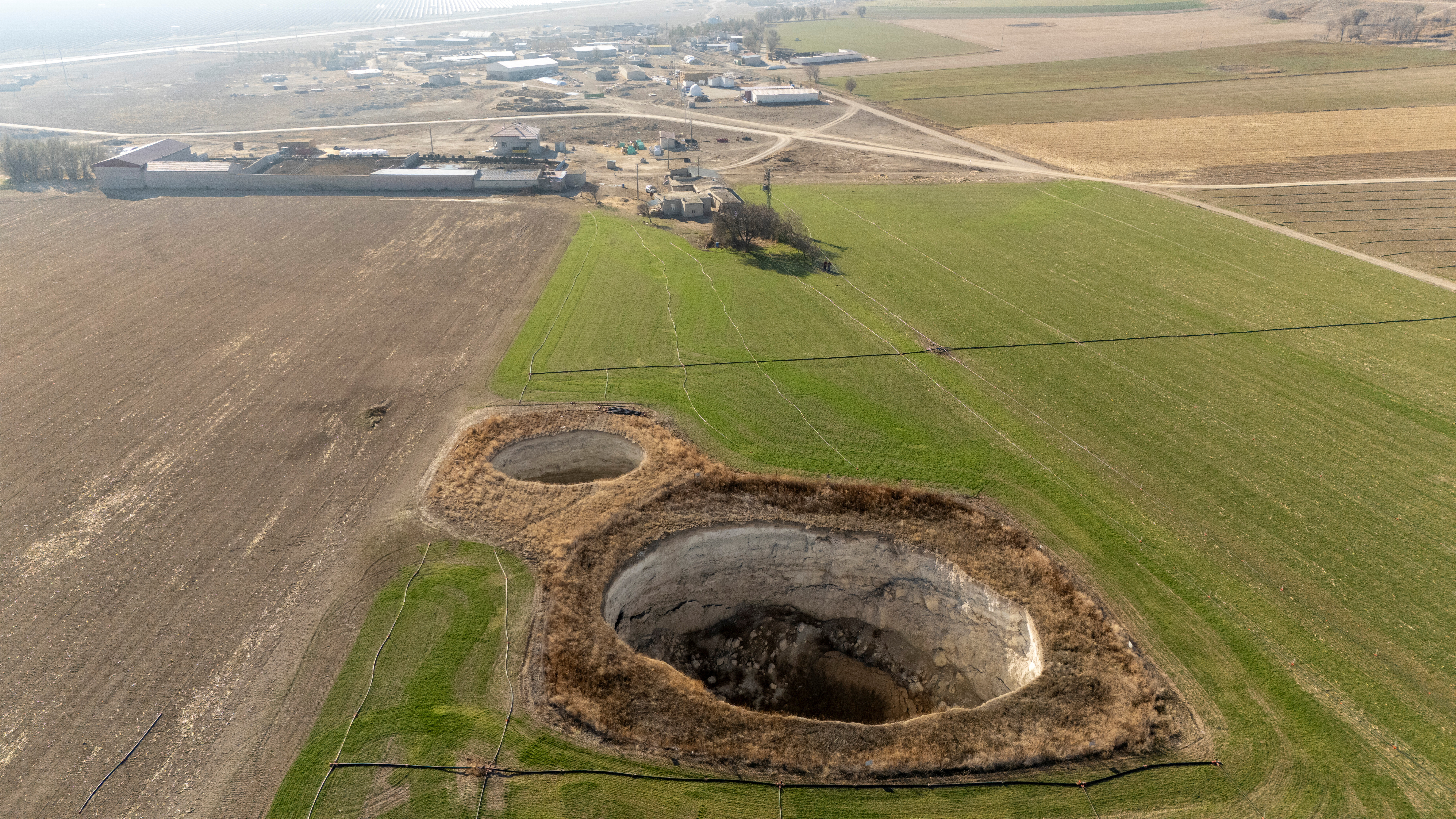Different regions across Canada experienced a mix of growing and weather conditions, which affected crop and forage production in various ways this year. Crop production is expected to be slightly higher than last year while overall forage production is expected to decline. Most cattle producers are adjusting to lower forage production by making use of feed alternatives. An abundance of feed grain supplies and improving profitability in the livestock sector are expected to support strong feed demand and sales. In this report, we present the feed outlook through winter and lay out implications for the Canadian livestock industry and commercial feed sectors.
Regional feed and forage production
Areas in western Canada had adequate rainfall and warm temperatures, increasing crop yields, while on the other hand, eastern Canada had a hot and dry summer, which is lowering yields. However, recent heavy rain in western Canada has raised concerns for unharvested crops. Many cereal crops, especially wheat, may be downgraded to feed quality. Overall despite regional differences, total crop production is still expected to rise slightly.
While Canada’s overall crop production is expected to increase, hay and pasture conditions in western Canada were below average this summer as rainfall came too late to support strong hay growth or grazing. However, the recent rainfall has brought relief to drought-affected areas in the Prairies. The moisture has helped extend grazing and may continue to support late-season forage growth. Ontario and Quebec saw good first hay cuts, but cool and wet weather affected quality in some regions. In the Atlantic provinces, warm and dry conditions supported better haying progress early in the season.
Hay remains the main winter feed for cattle, but farmers are increasingly turning to alternatives like corn and barley silage, along with corn grazing. In eastern Canada, drought conditions led some producers to harvest grain corn early for silage. The good news is that silage yields were generally strong, adding to the availability of affordable feed grains for winter feeding. More winter wheat acres also resulted in a larger supply of straw, making it a more affordable feed option to blend into rations heading into winter.
For those looking to purchase additional feed, it’s important to note that hay markets are highly regional, driven by local supply, demand, the feed grain market and transportation costs. But because hay yields are below average, prices are likely to rise and remain elevated until springtime. For example, Alberta is currently expected to produce about 15% less hay than last year. Given the historical relationship between yields and prices (Figure 1) prices heading into the winter-feeding season could be slightly higher than in 2024. The upside for cattle producers facing feed shortages is that hay prices are also influenced by the feed grain market, particularly U.S. corn. The USDA is forecasting a record corn crop, which is expected to keep feed prices low in Canada. As grain prices decline, they could help keep a lid on hay market increases. Hay price and yield relationships in other provinces show similar patterns.
Figure 1. Strong relationship between hay yields and prices
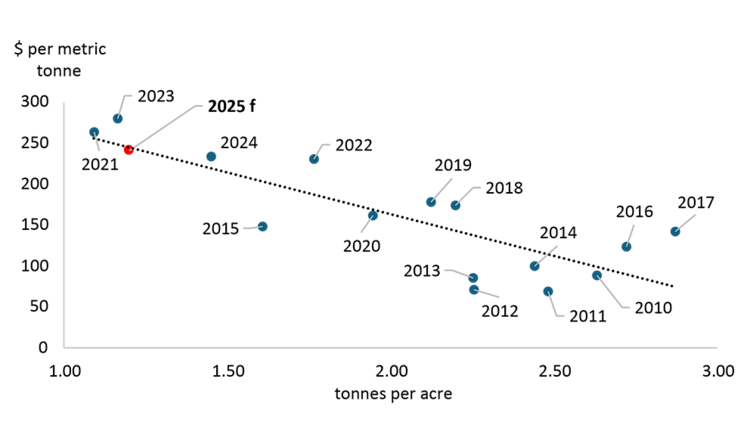
Note: hay prices are averaged from July to June rather than calendar year to coincide with hay production.
Sources: Government of Alberta, Statistics Canada, FCC Economics
Feed supplements are a valuable tool for managing low-quality forage and feed grains, and when straw is utilized in feed rations. The commercial feed sector is an important part of the feed industry in Canada and plays a large role in many livestock sector feed rations.
Canadian commercial feed sales projected to increase
Canada’s livestock sector has faced years of tight feed supplies and high costs. Expensive feed grains have hurt profits for producers and feed mills alike. In 2022, commercial feed sales hit a record $11.7 billion due to rising grain and oilseed prices. Sales dipped last year and are expected to reach $11.2 billion this year, with a projected rise to $11.9 billion by 2026 (Figure 2). However, these numbers depend heavily on feed grain prices, especially corn, and could be revised down if prices fall. Most of the feed sales growth is expected in western Canada, driven by poultry expansion, while dairy and hog sectors are expected to stay stable or grow slowly. Commercial feed sales in the cattle sector will depend not only on overall feed demand, but also on the need for additives and supplements to improve the quality of lower-grade feed available on cow-calf and feedlot operations.
Figure 2. Canadian commercial feed sales projected to increase
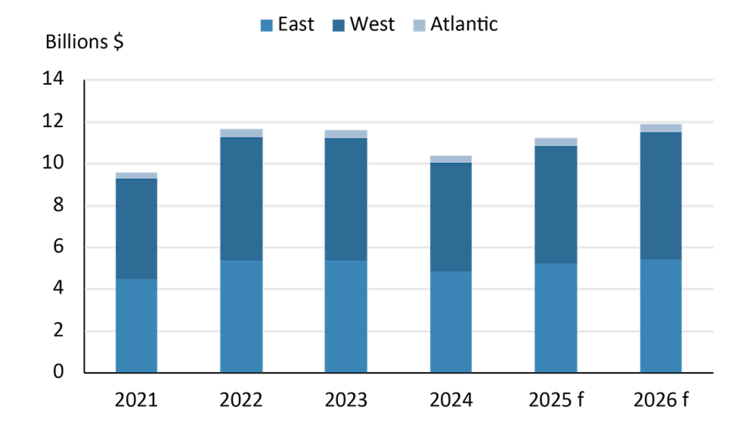
Sources: Statistics Canada, FCC Economics
Expanding poultry sector is an area of growing feed demand
Canadians’ strong demand for chicken and eggs is driving this momentum. Broiler production is expected to rise sharply in the second half of the year, with recent quota allocations averaging over 7% above base. However, avian influenza remains a major risk. The industry has underproduced relative to its allocation over the past year due to lower chick placements and disease outbreaks. Despite these challenges, this year’s production targets are well above normal. Egg layer production has also seen steady growth since last year. In June, western Canada saw a nearly 14% increase in the number of laying hens compared to the same time last year. Part of this growth is due to the region recovering from the impact of avian flu in the previous year. The expanding poultry sector remains a growing area of opportunity for the feed sector.
Dairy and hog sectors stable feed demand
Despite the dairy herd size remaining unchanged, milk production has increased, driven by strong demand for dairy products. Marketing boards have responded by issuing additional quota and incentive days to boost supply, which has contributed to improved dairy profitability. Dairy feed demand is expected to remain stable.
Canada’s hog sector is showing signs of recovery after several challenging years. As of July 1, the national hog inventory dipped slightly to 13.8 million head, with eastern Canada seeing a larger decline than the West. Despite this, recent improvements in hog prices and lower feed costs could lead to modest herd growth next year. Continued gains in productivity with more piglets born per sow could also support herd growth in the coming year. So, feed demand from the hog sector could rise if herd sizes increase.
Strong cattle price and abundant feed supplies supportive of herd rebuilding
The latest national cattle inventory numbers showed that as of July 1 the national beef herd size ticked upward for the first time since 2021. A continuation of strong cattle prices and easing feed costs could encourage more herd rebuilding.
In August, feedlot placements were 12.2% lower than last year, and this trend will be important to monitor as the fall calf run ends. If feedlot placements continue to trend lower, it could point to increased heifer retention. While that may mean less feed demand at feedlots in the short term, it suggests more on-farm feeding now and potentially higher feed demand in the years ahead.
Feedlot margins remain tight, but cheaper feed grains are helping. With plenty of feed grains available and record cattle prices, feedlots have an incentive to continue feeding cattle to heavier weights to improve profitability (Figure 3). This could lead to improved feed grain demand.
Figure 3. Feedlots have incentive to feed cattle to heavier weights
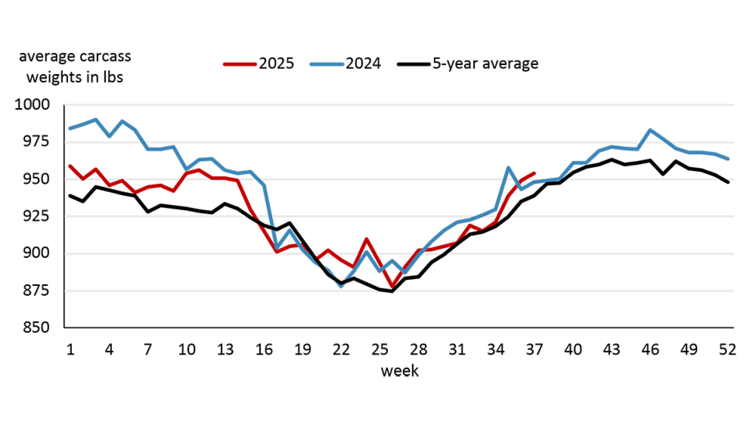
Source: FCC Economics
Bottom line
Abundant feed supplies and improving profitability in livestock sectors are boosting confidence among producers. Cattle prices have reached record highs, and signs of herd rebuilding are beginning to emerge. Dairy and poultry production quotas are also growing. Even the hog sector, which has faced challenges, is starting to recover thanks to improved prices. The abundance of feed grains, which is helping keep feed costs manageable, means producers are well positioned heading into winter. With livestock profitability remaining strong, feed demand is expected to stay supported. The outlook is positive for both the livestock and feed industries. We’ll keep an eye on how the North American feed grain harvest finishes up, along with updates in Canada’s livestock sector, and will share more detailed outlooks early next year.
Source - https://www.fcc-fac.ca


